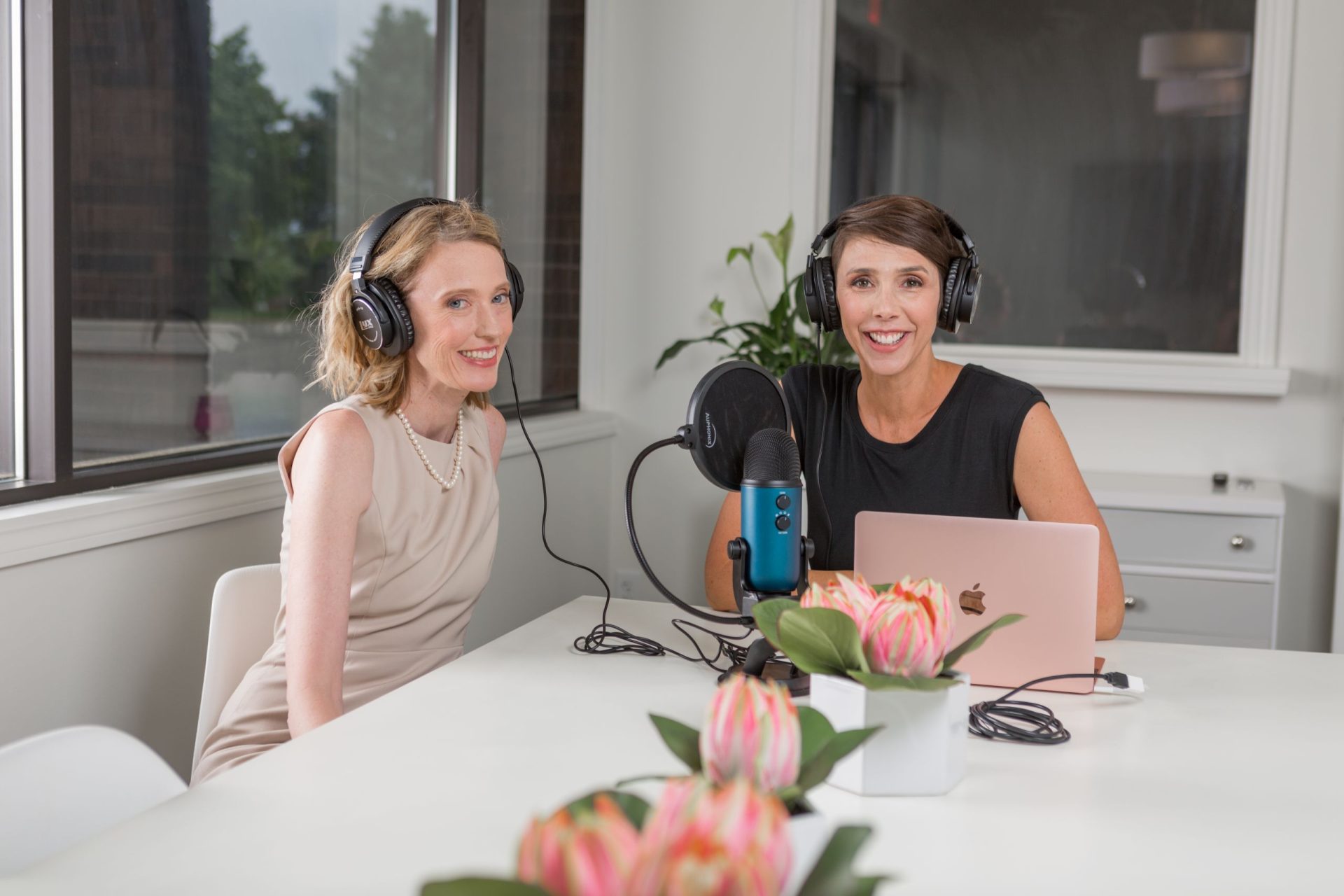
Podcast Episode #57: Sleep Consultations
Today we talk to Co-Owner of Gold Coast Doulas, Alyssa Veneklase, about sleep consultations. She talks about some common misconceptions and why her consultations are different. She says each sleep plan is unique and based on the individual family’s goals. Who knew you could still breastfeed and co-sleep if you want, all while getting a full night’s rest? You can listen to this complete podcast episode on iTunes or SoundCloud.
Kristin: Welcome to Ask the Doulas with Gold Coast Doulas. This is Kristin, co-owner, and I’m here with my business partner Alyssa to talk about sleep today. We are gaining a lot of interest from clients and the general public about sleep, so if you could start out by letting us know what sleep training is, what it isn’t, and how you’re different from other sleep consultants.
Alyssa: So there’s these misconceptions that we just don’t listen to what the parents need or want, and we just throw babies in a nursery, close the door, and let them cry for hours and say, oh, they’ll fall asleep eventually. And that couldn’t be further from the truth. It’s really like putting together a puzzle. When a client calls me, we have a phone consultation or I meet them in their home and they fill out a really extensive intake form where I ask a ton of questions. I want to know what kind of temperament the child has, whether they’re six weeks old, six months, or 18 months, because the temperament of that child will determine the different methods we try. And then what kind of parenting style; are you a co-sleeper, breastfeeding, formula-fed; is baby in the crib? So it’s like putting together a puzzle; let’s figure out what you’ve tried, what’s working, what’s not working, and honestly, most kids in three to five days figure it out and start sleeping really well.
Kristin: That’s amazing! I wish I would have had you when my kids were little.
Alyssa: And it can be as gentle or as fast-paced as you want.
Kristin: What’s the youngest age that you sleep train? That’s a common question we get, and what is the oldest?
Alyssa: I would say I’ve had clients as small as three weeks, but we don’t sleep train. It’s more about talking about what to look for developmentally in the next few weeks. Probably by six to eight weeks, they’ll start to notice some patterns in sleep. They start producing their own melatonin and all that good stuff, so it’s more about talking about proper sleep hygiene, what the nursery should look like, what the environment should look like around naps and sleep, but then actual sleep training usually starts around 12 to 14 weeks, as long as the baby wasn’t premature and the baby’s gaining weight healthfully.
Kristin: Do you go to the home, or is it a combination of phone and home? How does a client choose what package they want?
Alyssa: One or the other. It could be based on price because for me to go to their home, it’s a little bit more. Some parents want me to come to their space, meet the baby, see the nursery, see if there’s any glaring things that stand out. I might have to go in and say that this room is too light; you need a noise machine; this crib is full of sheets and stuffed animals and blankets and stuff that is not considered safe. Most of the time, it’s a phone consult. That seems to work for most, especially if they’re out of the area.
Kristin: As far as your top tips for potential clients or parents, what are some things you would say? You mentioned darkening a room and so on. What would be your top five things a parent could do?
Alyssa: For basic sleep hygiene, it’s really not until that six- or eight-week mark that they start producing their own melatonin. The production of melatonin only happens in the dark, but you also need that production of serotonin during the day. So it’s this fluctuation of hormones throughout the day, and one needs the other. So they also need sunlight. So I’ve had clients where they just sit in a dark room. They think to get their baby to sleep longer, it just needs to be dark all the time. Well, they’re not allowing their baby the production of serotonin to be active and have this active playtime during the day, so then it’s harder for them to produce the melatonin at night. So creating a sleep environment that’s dark helps. Sound machines: I’ve had a lot of clients use sound machines, but they’re so soft and the baby can barely hear them. It needs to be loud. I tell them think vacuum cleaner. If someone were in here right now with a vacuum cleaner, I would not hear anything going on outside this room. And swaddling; that Moro reflex or the startle reflex that babies have can wake them up several times in the middle of the night, so a safe swaddle, and by that, I mean arms in, really tight around the arms, but really loose around the hips because of hip dysplasia. That’s one thing that with the resurgence of swaddling babies, doctors have noticed that babies can have hip problems if their hips can’t move. So in my newborn class, I demonstrate that; really tight around the arms, but here’s how baby’s legs and hips should still be able to move.
Kristin: What about daytime? Do you have tips for naps and getting better daytime sleep?
Alyssa: Yeah, they go hand in hand, so people will say, oh, the baby sleeps fairly well at night, but is horrible during the day. Well, the night isn’t going to get better until the daytime improves, and a lot of times, it’s just letting them know how long they should wait in between a sleep. So sometimes for little, little babies, they might be trying to keep them up for two hours. A ten-week old baby might not be able to stay awake for more than an hour, so they get overly tired, and then they fight sleep. So letting parents know what a sleep pattern should look like based on their child’s age is sometimes really important.
Kristin: That makes sense, and at Gold Coast, we work with a lot of families with twins and triplets. How do you handle sleep training with multiples?
Alyssa: It’s lovely when they seem to have the same temperament and want to be on the same schedule, and oftentimes I have to remind parents that these are two different humans with different personalities. I’ve done twin consults where we just work with one because the kids’ temperaments are pretty much the same and they’re kind of already on the same schedule, but then some where they’re completely different. When one’s up, the other one is sleeping and vice versa. So then we kind of have to look at them as two separate being with two separate sleep plans.
Kristin: Now, one misconception is that if you’re working with a postpartum doula, Gold Coast or elsewhere, you wouldn’t necessarily need sleep training or a sleep consultation. So tell us why you need both.
Alyssa: Working as a postpartum doula, it’s totally different. I guess it’s different when I’m there because, since I’m also a sleep consultant, there are things I can do, like little tips and tricks I can give Mom and Dad too, but as a postpartum doula, you’re there to ensure the parents get a good night’s rest. So I’m not there to help baby learn to sleep or to self-soothe. The postpartum doula is there to help feed baby, change baby, and ensure that Mom and Dad get rest. Sleep training isn’t usually done overnight. I have an option for a package where I could do that, but usually it’s unnecessary. My plans are so thorough, and they get constant support from me, so by the time nighttime rolls around, they know exactly what they need to do.
Kristin: So you can still have a regular overnight postpartum doula, but just have them or the parents implement your plan you set up for them?
Alyssa: Yeah, I’ve had clients either with a doula or for older children if they have nannies, and I have them either get on the phone call with us, or if they’re not available, they read through the whole plan. And then I’ve even texted back and forth with the nannies, if they’re the one doing the majority of the sleep training during the day to get them on board.
Kristin: So Alyssa, if you are working with a family who tends to breastfeed their baby to doze off, like that’s how they put them to sleep during the day as well as at night, how would you be able to let them still feel connected to the baby in that way and be attachment-focused but still create a stronger routine for the baby or toddler?
Alyssa: So sometimes the feed-to-sleep habit or association doesn’t necessarily cause a problem, but that’s not common. Usually, it becomes an association which includes several wake-ups in the night where the Mom has to get up and feed, so again, it’s just talking to – there’s 20 questions I would have to ask this mom before I could give her a plan, but it’s always about her goal. I always ask: at the end of all this, what’s the end game? What’s your goal for this? And if it’s that she still wants to co-sleep and breastfeed but just can’t wake up six times every night, then I work out a plan specifically for her. If it’s that they’ve been co-sleeping but didn’t mean to and it’s not working out the family and hurting the relationship with the partner, then the end goal is they want baby in their own crib, whether it’s in their room or in their own nursery. That’s a whole different plan.
Kristin: And obviously whether they’re co-sleeping or the baby is in the crib, it’s all about safe sleep and being able to recognize what is safe and what is unsafe.
Alyssa: Yeah, and there are safe ways to co-sleep, and a crib is also very safe, but it can be unsafe if, say, a newborn is put on their tummy or if it’s filled with stuffed animals and blankets. The first thing I do is rip all that stuff out of there.
Kristin: Well, thank you for your time today, and if people are interested in reaching out to you, whether they live in West Michigan or elsewhere, how do they connect with you?
Alyssa: I would say go to our website and just fill out the contact form and let me know you’re interested in sleep. You can always call our phone number, too, at 616-294-0207 or email me at alyssa@goldcoastdoulas.com. I’m always willing to chat. A lot of parents will say, I just don’t think my baby’s ever going to sleep, and after hearing a few details about what their nights and days look like, it’s usually not as bad as they think, and a few easy fixes can get them on track. So even for people who don’t live in the area, a phone consult with email and text support is what I give no matter what.
Kristin: Thank you so much!


